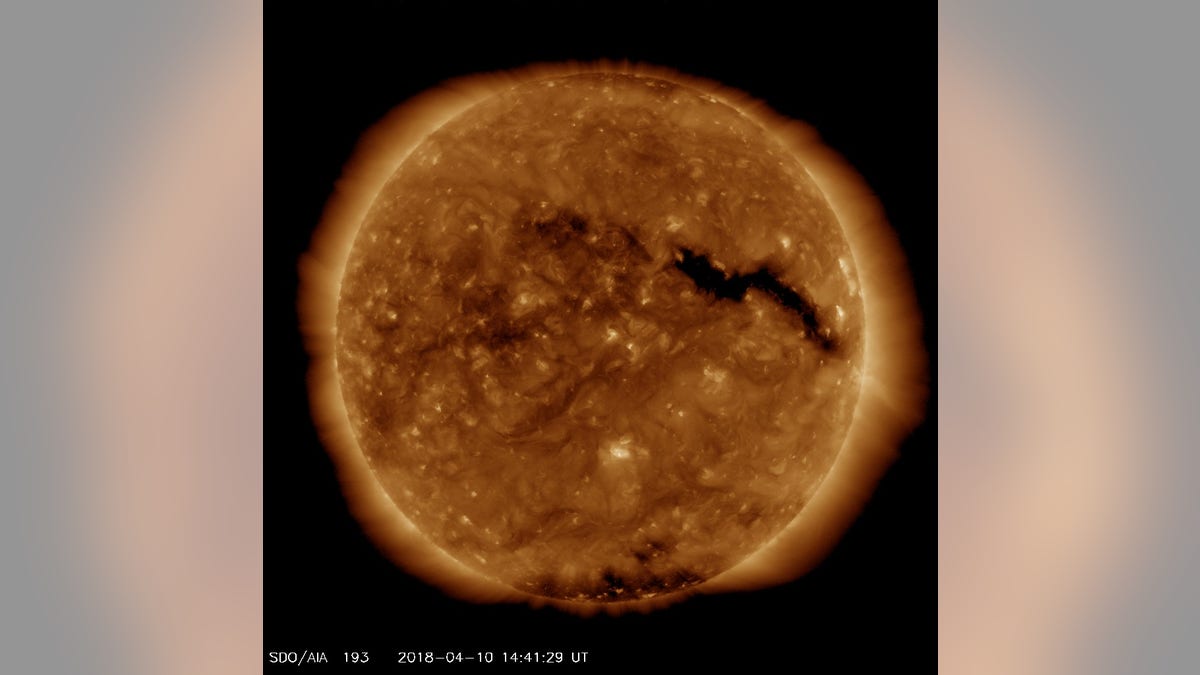
A coronal hole on the sun can be seen in this image from April 10, 2018, taken by NASA's Solar Dynamics Observatory. (Courtesy of NASA/SDO and the AIA, EVE and HMI science teams)
A massive "hole" on the surface of the sun has unleashed a strong solar wind that scientists say may amp up the northern lights in some areas of the U.S. and could disrupt satellite communications over the next few days.
Data from NASA's Solar Dynamics Observatory revealed a vast region where the sun's magnetic field has opened up, creating a gap in the sun's outer atmosphere, called the corona. This region, also known as a coronal hole, allows charged particles to escape and flow toward Earth in an increased solar wind. As a result, the U.S. Space Weather Prediction Center (SWPC) has issued a geomagnetic storm watch for today and tomorrow (April 10 and 11).
"Arriving some hours earlier than expected, a stream of fast-moving solar wind has reached Earth," according to Spaceweather.com, which regularly monitors space weather. "The gaseous material is flowing from a wide hole in the sun's atmosphere, and could engulf our planet for several days." [Stunning Photos of Solar Flares & Sun Storms]
Space-weather forecasters predict that the class-G1 magnetic storm (a minor storm) may have a slight impact on Earth's power grid systems, spacecraft and satellite operations. In addition, skywatchers in areas of the northern United States — such as northern Montana, North Dakota, Minnesota, Michigan and Maine — could see amplified auroral displays, according to the SWPC.
More From Space.com
Images from the Solar Dynamics Observatory identify a dark patch on the sun's surface as the location from which the solar wind originated, according to Spaceweather.com. You can see more current views of the sun on the observatory's website here.
When solar material hits Earth's magnetic field and causes a disturbance — also known as a geomagnetic storm — it can trigger radio blackouts, interfere with power grids on Earth and affect satellites in orbit. Such a storm can also amplify Earth's auroras, making them visible in lower latitudes than usual.
Original article on Space.com.
